In this article, you can learn about sleeving cards in your board/card games. Should you sleeve your cards? What are the pros and cons and what else should you consider?
Should you sleeve cards?
The decision to sleeve cards depends on several factors: how often and in what environment you play, and how much money you’re willing to spend on your board/card games. Sleeves protect your cards from wear and other outside factors, such as dirt, spills, and moisture.
What are sleeves?
Card sleeves are plastic bags in which the cards are inserted. The inserting is usually done with the bottom side in so that the cards don’t fall out when held in hand. Topside-in or even double sleeving are also options.
The outer layer of plastic protects the cards from wear and tear (shuffling and handling), as well as from unexpected outer factors, such as spills, stains, and careless use.
Of course, not everyone will even consider sleeving. Casual players that just want to play the game and have fun, won’t care much about it, or may not even have heard of it. On the other hand, enthusiasts, who are meticulous about their collections, will go to great lengths to make sure their games are properly pimped out: sleeves, custom inserts, and other accessories.
As is usual, most people fall somewhere in the middle. They might sleeve some games and they might not with other games. Let’s take a look at the positives, negatives, and some other factors to consider when sleeving.
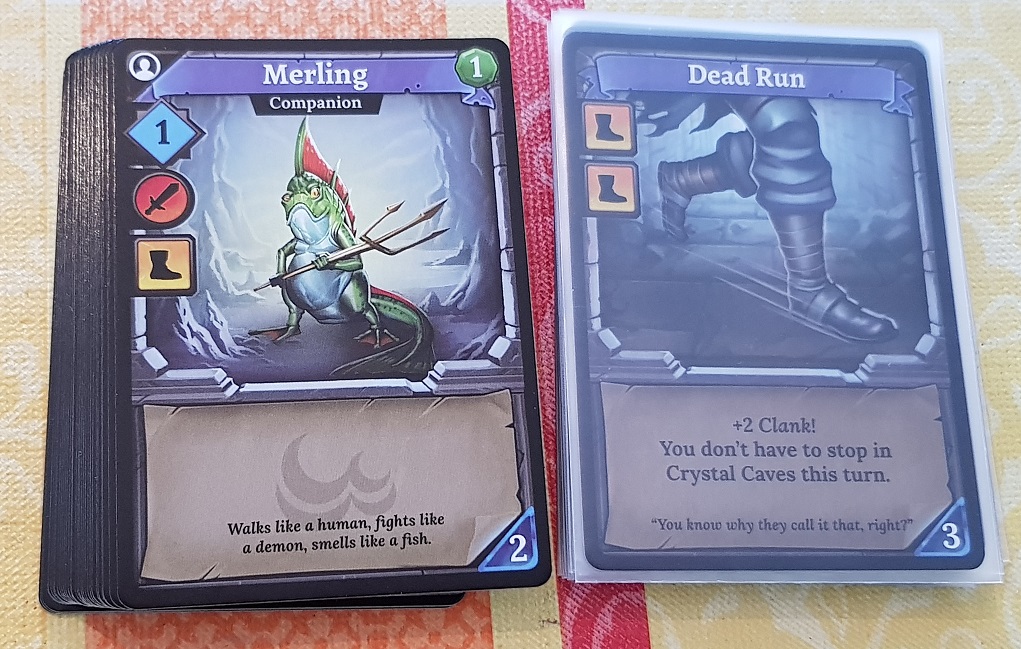
Why should you sleeve your cards?
For physical protection against natural wear and tear. Also as a protection against accidents and careless players:
- sweaty and dirty hands;
- grease, spills, and stains from food and beverage;
- sunlight, moisture, and humidity.
For smoother shuffling, especially when it comes to mash shuffling – laying out the cards on the table and shuffle them with circular hand movements. It’s very efficient, often the only viable way of shuffling large decks. But it’s also very damaging to the cards.
The sleeves give your decks (or whole games) a premium feel. You know you’re playing something special when playing with protected components. While providing physical protection, it will also cause a psychological effect on people. They will treat the cards will more care – just like you won’t litter on the street that’s being kept in tip-top shape.
If the cards wear unevenly, an observant eye will quickly spot the patterns and recognize which card is which from the back. It’s said that the cards are marked and this can provide an unfair advantage to players that are more familiar with a deck.
While this is technically not cheating (this starts if you purposely mark the cards), it certainly doesn’t benefit the balance of the gameplay.
Sleeving protects against marking the cards, and if somehow a sleeve gets marked, you can easily replace it.
Sleeves increase the value of your games
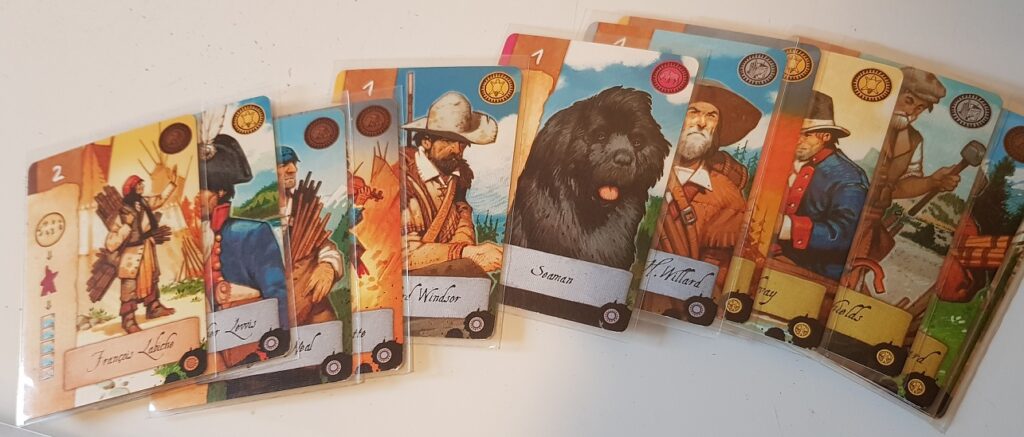
Drawbacks of sleeving cards
The single largest point against sleeving is the price. While there are cheap sleeves available, they are not recommendable. With quality sleeves, prices can quickly skyrocket, especially with games that have a lot of cards. As the price can sometimes be comparable to buying another board game, players find it hard to justify.
Because of that, players don’t sleeve everything but consider various factors (see further below), when deciding which game to sleeve and which not to.
Glare and the overall clearness of the cards. If you put an object between a card and your eyes, it’s going to distort the visibility, it doesn’t matter how clear, matt, and otherwise high quality it is. The cards won’t look as nice as in their vanilla shape. That’s why it’s important to invest in high-quality sleeves so that the effect of glare is minimal and the overall clearness of the image as high as possible.
Even though it’s a one-time job, you’ve got to sleeve every card manually. Not a big deal if you’re sleeving a couple of dozen of cards, but what about a deck-builder like Legendary: A Marvel Deck Building Game, that comes with 500 cards in the box? Sleeving can be time-consuming.
While sleeves help with mesh shuffling, it’s the opposite with riffle shuffling. This is actually harder with sleeves. Consider this if the decks are not too thick and you mostly riffle shuffle.
Sleeved cards increase the size of the deck – in all three dimensions. While this is usually not a problem, in some cases it is a difference between fitting and not fitting into an insert.
Finally, there’s the environmental aspect. More and more people are repulsed by the excessive use of plastic and sleeves are exactly that – plastic.
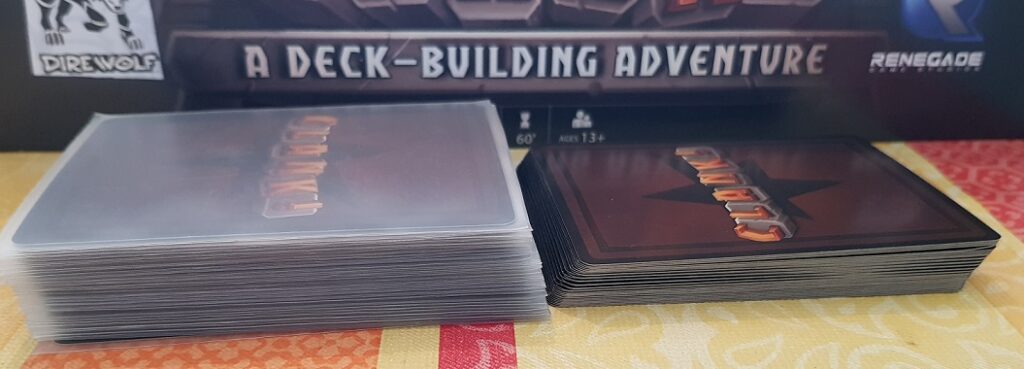
Things to consider when sleeving cards
How often will you play the game? Be honest with yourself – there won’t be much damage to the cards after 5 plays and there’s no need to sleeve your Mage Knight if you play two games per year. (You can still sleeve it for premium value, of course.)
Even if you play a board game often, consider how frequently are the cards handled. For example, there’s no need in sleeving the event deck that you draw three cards per game from. In a board game, where card drafting is the main game mechanic, the cards will suffer much more wear.
Who do you play with and in what environment? If I’m playing solo, I’m pretty confident I can handle the components carefully and not damage them. However, the more players you have in your group, the harder it is to control this. Now add drinks and food and you’ll want your whole game under a sleeve, not just the cards. (Let’s leave table etiquette and player selection for a future article.)
It also depends on the type of games you play. For regular card games (i.e. poker or rummy), you’ll just buy a new deck. Collectible card games (i.e. Magic: The Gathering) often include very rare and expensive cards that pay for the sleeve by themselves.
With living card games (i.e. Arkham Horror LCG) and board games you pretty much have to decide on a game-by-game basis. The more expensive and rarer it is, the more you want to sleeve it. Also, consider that the games can go out of print, meaning there’s no way to replace worn game components. Sleeve those too, then.
It’s worth reiterating not to buy cheap sleeves. They make shuffling and handling harder. They lack durability and can start opening up on the edges, the plastic can lose transparency and flexibility. If you decide to invest in sleeves, do it properly – or don’t do it at all.
It’s pretty self-explanatory why combining different sleeve models and manufacturers is a no-go. Stick with one brand. Nothing’s worse than buying a new expansion and not knowing which sleeve model you used for the base game.
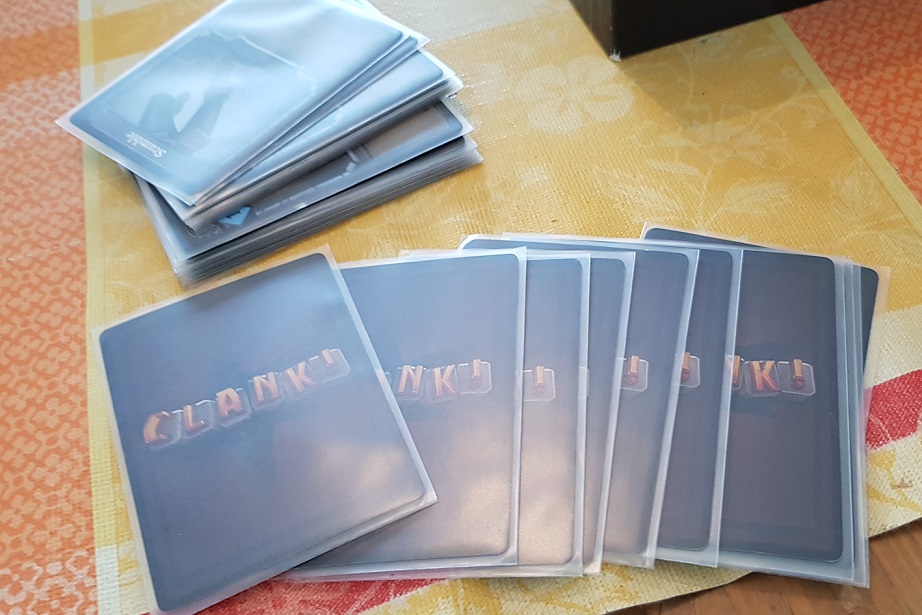
Double sleeving
Every sleeve has an opening (that’s how you slide the card in, duh), which means there’s a chance of moisture, dirt, or spills still getting in, or contaminating the edge. That’s why in some cases (collectible card games come to mind again, where some cards can be invaluable), players will resort to the ultimate protection – double sleeving.
This means that you sleeve them top in first, then sleeve them again bottom first. The second sleeve must be just slightly larger so that the fit is perfect. This speeds up the process of sleeving and also makes the end result look better. Manufacturers offer different dimensions, so make sure you research properly when buying for double sleeving.
Of course, the cost of double sleeving is doubled, but sometimes it might be just the process you’re looking for.
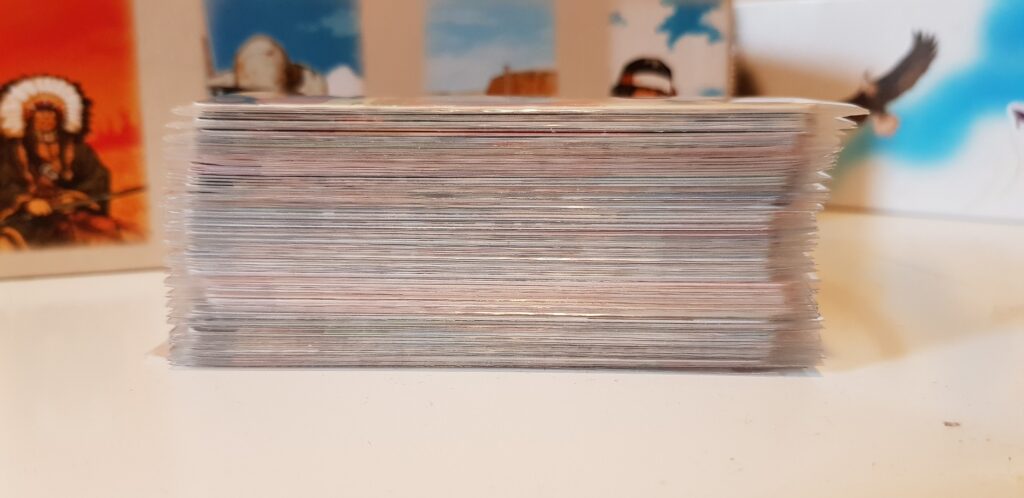
To sleeve or not to sleeve?
There will be people who sleeve everything. There are people who even glue the shrink-wrap back on the box. On the other hand, there are people who don’t bother with sleeving or storing their games properly. Some even throw the boxes out and keep the games in bags.
The trick is to find something that works for you; as a collector and as a player.
How to Make Your Board Game Collection More Eco-Friendly
Do you like what you just read? Consider subscribing for more content:
